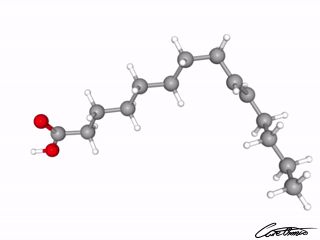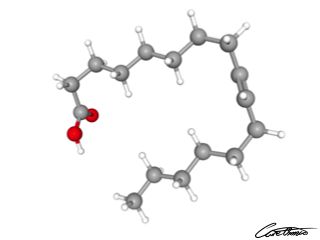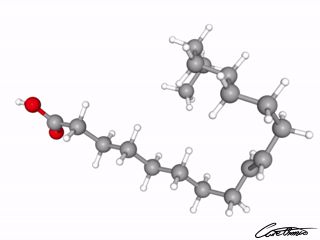Monounsaturated trans Fatty Acids: How To Use Them For Your Benefit
Trans fatty acids are geometric isomers of cis fatty acids. They can be produced through the bio-hydrogenation of fat from ruminant animals or by industrial hydrogenation of vegetable oils.
Monounsaturated trans fatty acids are one of four categories among monounsaturated fatty acids.
Elaidic acid, trans 18:1 is the most common monounsaturated trans fatty acid ◳ in our diet.
Tip! Use the "Show Expanded TOC" button if you want to jump straight to a specific article.
Table of Contents
Naturally Occurring Or Hydrogenation Trans Fatty Acids
Most trans fatty acids do not commonly occur in nature, they are produced by an industrial process called hydrogenation.
Naturally occurring trans fats such as those found in grass-fed meat ◳. They are quite different and exist at low concentrations compared to industrially produced trans fats.
Trans fat is the final product of a chemical process called hydrogenation. It is when a liquid unsaturated fat is turned into solid fat to prevent it from becoming rancid.
Negative Health Consequences Of Hydrogenation Trans Fatty Acids
Many studies have confirmed the negative health impact of trans fats ◳, estimating that trans fat had caused 20,000 deaths annually in the United States from heart disease.
Their negative health consequences are well understood and documented.
Fatty acids can change from the cis to the trans-form by processes such as heating, baking, and frying. Trans fatty acids are connected to cardiovascular disease ◳ in adults.
Hydrogenation trans fatty acids have a widespread presence in everything from margarine, commercial cookies, pastries, frozen foods, fried foods, packaged snacks to French fries in fast food.
Our Articles On Common Monounsaturated Trans Fatty Acids
Below you will find the most common cis-monounsaturated fatty acids. You can find out what they are and what they might be able to do for you.
Myristelaidic acid (14:1 t) with potential anti-cancer properties

Myristelaidic acid is a relatively neutral acid that might have anti-cancer properties on prostate cells.
Find more information about this acid in What Is Myristelaidic Acid (14:1 t) & What Foods Can I Find It In?
Or check out its benefit in Myristelaidic Acid (14:1 t): One Research-Backed Benefit
Palmitelaidic acid (16:1 t) can be good for your heart

You can find palmitelaidic acid in ruminant meat and milk. Read more about it in What Is Palmitelaidic Acid (16:1 t) & What Foods Can I Find It In?
High intake of this fatty acid has been associated with a lower risk for sudden cardiac death and diabetes. Check out the benefits of palmitelaidic acid in Palmitelaidic Acid (16:1 t): 2 Research-Backed Benefits
Elaidic acid (18:1 t) is bad for cholesterol levels

Elaidic acid is trans fat found abundant in hydrogenated vegetable oils. Learn more in What Is Elaidic Acid (18:1 t) & What Foods Can I Find It In?
This fatty acid might raise LDL and lower HDL cholesterol. See about the side-effect in Elaidic Acid (18:1 t): One Research-Backed Side-Effect
Brassidic acid (22:1 t) is bitter-tasting
Brassidic acid occurs in nature only along with bitter-tasting compounds.
You can find more information in What Is Brassidic Acid (22:1 t) & What Foods Can I Find It In?
trans-Monoenoic fatty acids
trans-Monoenoic fatty acids are both found naturally and are industrially produced.
Find more information about trans-monoenoic fatty acids in What Are trans-Monoenoic Fatty Acids & What Foods Can I Find It In?
